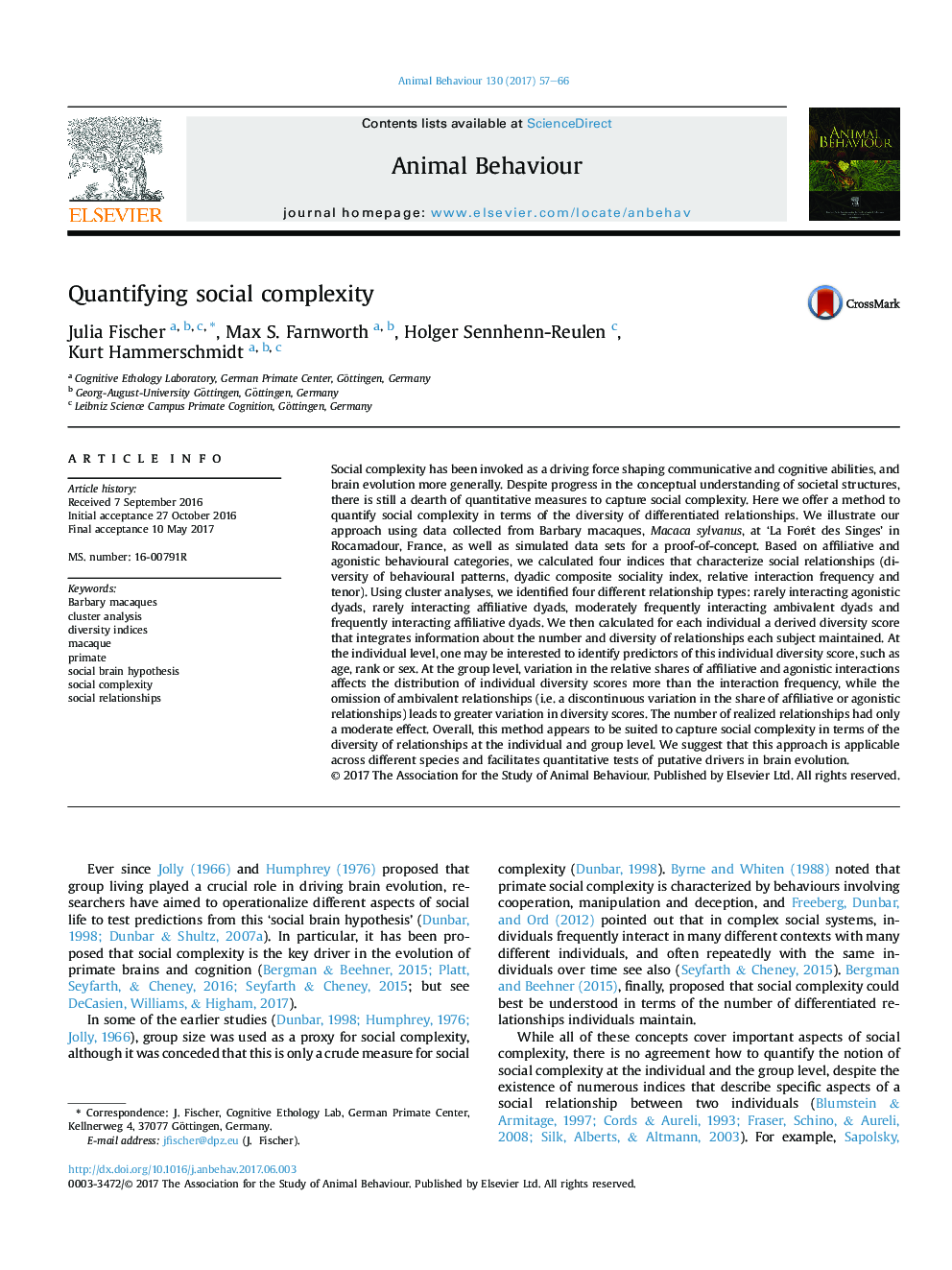| کد مقاله | کد نشریه | سال انتشار | مقاله انگلیسی | نسخه تمام متن |
|---|---|---|---|---|
| 5538406 | 1552198 | 2017 | 10 صفحه PDF | دانلود رایگان |
عنوان انگلیسی مقاله ISI
Quantifying social complexity
ترجمه فارسی عنوان
شمارش پیچیدگی اجتماعی
دانلود مقاله + سفارش ترجمه
دانلود مقاله ISI انگلیسی
رایگان برای ایرانیان
کلمات کلیدی
ماکارا باربارا، آنالیز خوشه ای، شاخص های تنوع، مکه پرایمکت، فرضیه مغز اجتماعی، پیچیدگی اجتماعی، روابط اجتماعی،
موضوعات مرتبط
علوم زیستی و بیوفناوری
علوم کشاورزی و بیولوژیک
علوم دامی و جانورشناسی
چکیده انگلیسی
Social complexity has been invoked as a driving force shaping communicative and cognitive abilities, and brain evolution more generally. Despite progress in the conceptual understanding of societal structures, there is still a dearth of quantitative measures to capture social complexity. Here we offer a method to quantify social complexity in terms of the diversity of differentiated relationships. We illustrate our approach using data collected from Barbary macaques, Macaca sylvanus, at 'La Forêt des Singes' in Rocamadour, France, as well as simulated data sets for a proof-of-concept. Based on affiliative and agonistic behavioural categories, we calculated four indices that characterize social relationships (diversity of behavioural patterns, dyadic composite sociality index, relative interaction frequency and tenor). Using cluster analyses, we identified four different relationship types: rarely interacting agonistic dyads, rarely interacting affiliative dyads, moderately frequently interacting ambivalent dyads and frequently interacting affiliative dyads. We then calculated for each individual a derived diversity score that integrates information about the number and diversity of relationships each subject maintained. At the individual level, one may be interested to identify predictors of this individual diversity score, such as age, rank or sex. At the group level, variation in the relative shares of affiliative and agonistic interactions affects the distribution of individual diversity scores more than the interaction frequency, while the omission of ambivalent relationships (i.e. a discontinuous variation in the share of affiliative or agonistic relationships) leads to greater variation in diversity scores. The number of realized relationships had only a moderate effect. Overall, this method appears to be suited to capture social complexity in terms of the diversity of relationships at the individual and group level. We suggest that this approach is applicable across different species and facilitates quantitative tests of putative drivers in brain evolution.
ناشر
Database: Elsevier - ScienceDirect (ساینس دایرکت)
Journal: Animal Behaviour - Volume 130, August 2017, Pages 57-66
Journal: Animal Behaviour - Volume 130, August 2017, Pages 57-66
نویسندگان
Julia Fischer, Max S. Farnworth, Holger Sennhenn-Reulen, Kurt Hammerschmidt,
